For new websites, implementing effective search engine optimisation (SEO) strategies can be a real challenge. With constantly evolving search trends and shifting industry landscapes, staying ahead isn’t easy. However, SEO plays a crucial role for new sites, helping them attract traffic and gain visibility early on.
Mastering the complex algorithms and ever-changing dynamics of search engines can take years. As industries grow and technology evolves, it becomes increasingly difficult for new domains to gain traction. But there’s no need to worry, our Brisbane-based SEO agency has deep expertise in navigating these challenges. We’re here to share some of the most critical factors that can help your website rank effectively — and quickly.
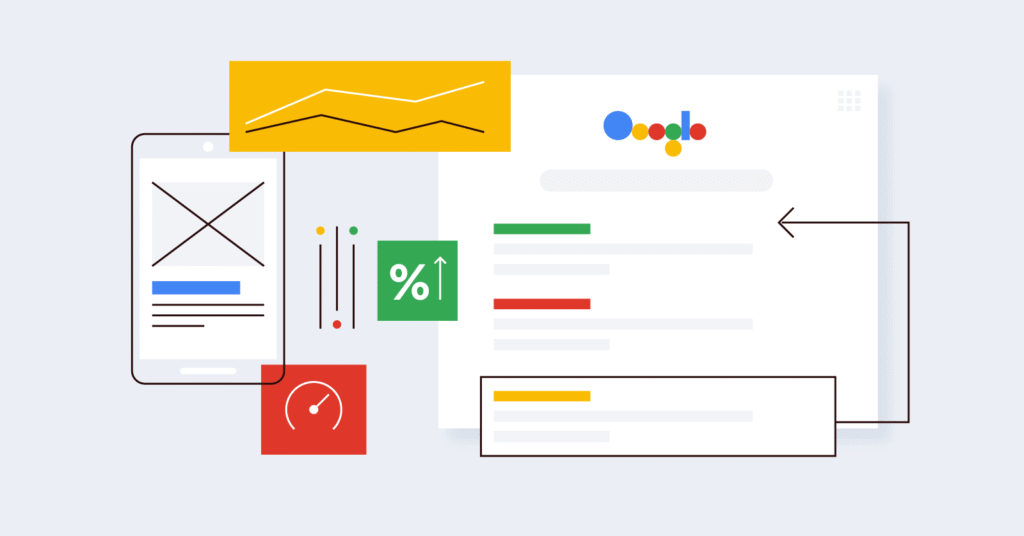
By applying the right SEO techniques from the beginning, new websites can start attracting traffic and gaining visibility among potential customers much sooner.
It’s widely understood in the SEO world that results are rarely immediate. It can take several weeks or even months for your site to appear in search engine results. For brand-new websites, this delay can be even longer, as it takes time for Google’s indexing bots to discover and process your content. So, how can a new site develop an SEO strategy that maximises visibility and rankings on Google?
Although the fundamentals of SEO are relatively easy to grasp, putting them into practice can be time-consuming. However, by following a few key steps before launching your website or publishing content, you can reduce frustration down the road and significantly improve your overall SEO performance.
Nail Your Website’s Architecture
Every successful website begins with a carefully planned architecture, and this is especially important for SEO.
Website architecture refers to how your pages are organised and interconnected. Building a logical, easy-to-navigate structure is crucial for both visitors and search engine crawlers. It helps users quickly find the information they need while enabling Google’s bots to crawl and index your site more efficiently a key factor when managing a brand-new website.
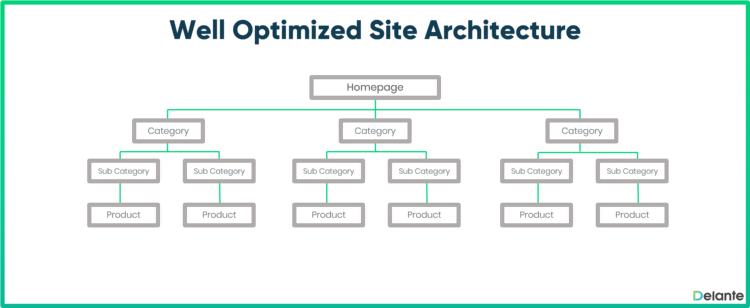
When planning your site’s architecture, consider how you want visitors to navigate through your pages. Establish a clear hierarchy with a limited number of categories and subcategories. Within each page, include links to other relevant pages using target keywords that correspond to those URLs.
This approach not only makes it easier for visitors to find the information they need but also improves how search bots index your pages. Additionally, ensure every page has a descriptive title tag and meta description—no exceptions. These elements provide crucial information about your content and can significantly boost your SEO performance.
One effective way to optimise your site’s architecture for search engine results pages is by adding breadcrumbs. Breadcrumbs are links typically displayed at the top of a page, just above the title, which create a navigational trail back to the homepage.
Breadcrumbs benefit both users and search crawlers by allowing users to easily return to the homepage if needed, while helping bots understand your site’s structure. Moreover, breadcrumbs can enhance your website’s click-through rate (CTR) by offering users an additional interactive link.
Why Keyword Research Is Vital for SEO
One of the most crucial elements of optimising a website or blog for search engines is targeting the right keywords for your site. Each target keyword should be a phrase or term that users can relate to and expect to find valuable information about on your site.
To ensure your website appears in search results, it’s important to focus on long-tail keywords that are relevant, have substantial search volume, and possess a low enough keyword difficulty to allow you to rank more easily.
However, simply selecting popular keywords is not sufficient. You must also incorporate these keywords naturally throughout your site in page titles and descriptions, blog posts and other content, and within the HTML code. This includes optimising internal linking, building external links, and refining your title tags. Effective keyword use involves many interconnected elements.
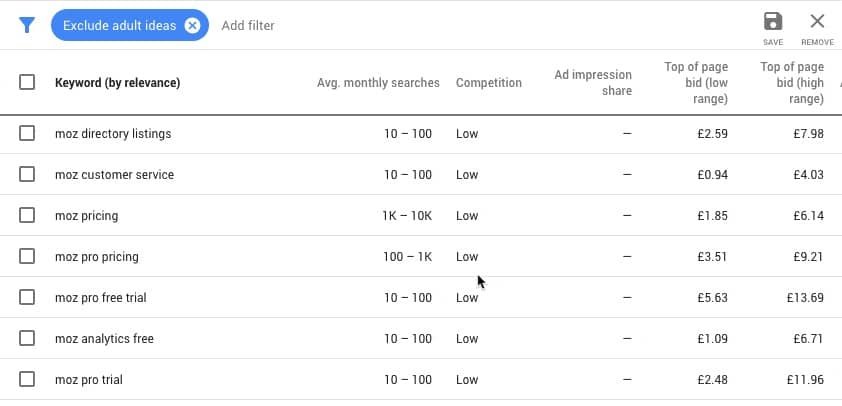
By implementing these strategies, your site is much more likely to appear in search results when users look for those terms. Investing time in thorough keyword research helps you identify the most effective phrases for your site, ensuring it reaches the right audience actively searching for what you offer.
Pro tip: Use a free tool like Google’s Keyword Planner to discover the best keyword opportunities for your pages.
How Your Platform’s Page Speed Influences SEO
Page speed is a critical factor in SEO, impacting everything from search engine rankings to conversion rates.
In simple terms, faster-loading pages deliver better results. Several elements contribute to page speed, including server response time, file sizes, and code structure. As a platform provider, you have a unique opportunity to optimise your products for speed.
In today’s fast-paced digital environment, users expect to access information quickly and easily. When they click on a page that takes too long to load, they often become frustrated and leave—especially when browsing on mobile devices.
On average, users are willing to wait no more than 15 seconds for a page to load. Beyond that, the chance of them bouncing from your site increases significantly. In fact, if a page takes five seconds or longer to load, the bounce probability approaches 90%.
Your website’s crawl budget can also be affected by issues like poor server response or slow load times.
The crawl budget is the number of pages Googlebot crawls within a given timeframe. If Googlebot overloads your server and slows it down, it will reduce the crawl rate.
This slowdown can negatively impact your site’s ranking and visibility, as Google becomes less likely to index all your content if pages take too long to load. To improve your crawl budget, ensure your website loads quickly and efficiently.
Reducing the number of server requests can also speed up the crawling process. Taking these steps helps keep your website healthy and visible to potential visitors.
For large eCommerce sites, indexing may take longer because search engines need to crawl extensive data to find all your pages.
Make sure to monitor the Crawl Errors report in Google Search Console (or Google Analytics) to identify and fix any errors blocking search engines from indexing your site. Minimising server errors is equally important, as they can slow down crawling.
By closely managing these factors, you can enhance your search traffic acquisition and ensure your site is indexed quickly and effectively.
Mobile Optimisation Is Crucial
With over three billion people worldwide using smartphones, it’s clear that mobile devices are here to stay. As more users rely on their phones to access the internet, businesses must ensure their websites are fully mobile-friendly.
Mobile optimisation is essential for SEO because it helps your website rank higher on search engine results pages (SERPs). Higher rankings mean more traffic, which translates to more customers and increased sales — simple as that.
But there’s more. Mobile optimisation also enhances the user experience, making visitors more likely to stay on your site and engage with your content.
Here are some key ways to make sure your site is properly optimised for mobile devices:
- Readable Text: Ensure your site’s text is easy to read by using a sufficiently large font size and avoiding overly long lines of text. Sans-serif fonts are generally easier to read on small screens. Also, provide users the option to enlarge text if needed.
- Viewport Tag: To ensure your website displays correctly on all devices, use a viewport tag. This instructs the browser how to adjust the site’s dimensions and scaling according to the device’s screen size. Without it, your site may appear zoomed out or too small on mobile, making navigation difficult. The viewport tag should be included in the <head> section of your HTML, like this:
<meta name=”viewport” content=”width=device-width, initial-scale=1.0″> - Page Load Speed: Fast loading times are critical for mobile SEO rankings. To improve speed, optimise images, use a content delivery network (CDN), and avoid excessive use of JavaScript or Flash, which can slow down your site.
Responsive Design Over Mobile URLs: Avoid creating mobile-specific URLs using m-dot domains or subdomains. Though this may seem simpler, it often leads to more maintenance work and is not recommended by Google. Instead, use a responsive design that allows a single URL to serve both desktop and mobile users seamlessly.
The Impact of Your Domain Name and Homepage URL on SEO
Your domain name is one of the first things visitors notice about your website, so it’s important to select one that is both memorable and relevant to your business. Beyond branding, your domain name can also influence your search engine optimisation (SEO).
Generally, shorter and more descriptive domain names tend to perform better for SEO compared to longer or more generic ones. Including keywords in your domain name can further boost your SEO. For instance, if you run a cleaning service in Brisbane, a domain like www.brisbanecleaningservices.com.au would be highly effective.
Similarly, your homepage URL plays a key role in SEO. It should be concise, descriptive, and include relevant keywords. For example, a URL such as www.brisbanecleaningservices.com.au/rates is more SEO-friendly than a generic URL like www.brisbanecleaningservices.com.au/category/1234.

Dividing your website across multiple domains can negatively affect your search engine optimisation. This happens because each domain has its own unique domain authority, which measures how well a domain ranks in search engine results pages (SERPs).
By spreading your site over multiple domains, you dilute your overall domain authority, making it harder for any one domain to achieve high rankings. Conversely, maintaining your content within subdomains can help strengthen the authority of your main domain.
This is because search engines treat subdomains as separate entities, so linking back to your main domain from a subdomain can boost the SEO of your primary site. For this reason, it’s generally best to avoid splitting your website across multiple domains or subdomains whenever possible.
How to Optimise Your Page URL
Website owners often underestimate the importance of optimised URLs. Although it may seem like a minor detail, URLs are among the first elements that Google and other search engines evaluate when deciding how to rank a website.
There are a few straightforward steps to optimise your website URLs effectively. First, include keywords that accurately reflect the page content. This helps search engines understand the topic of the page and increases the likelihood of ranking for relevant searches.
Second, keep your URLs short and concise. Long, complex URLs are more likely to be penalised by search engines.
Finally, use dashes (-) to separate words within URLs instead of underscores (_). Dashes are easier for search engines to interpret and also make your URLs more user-friendly.
Why You Should Use Google Search Console
As a website owner, monitoring your site’s performance is crucial for identifying potential issues that may impact your SEO. Google Search Console is a free tool that offers valuable insights into how your website is performing in search results.
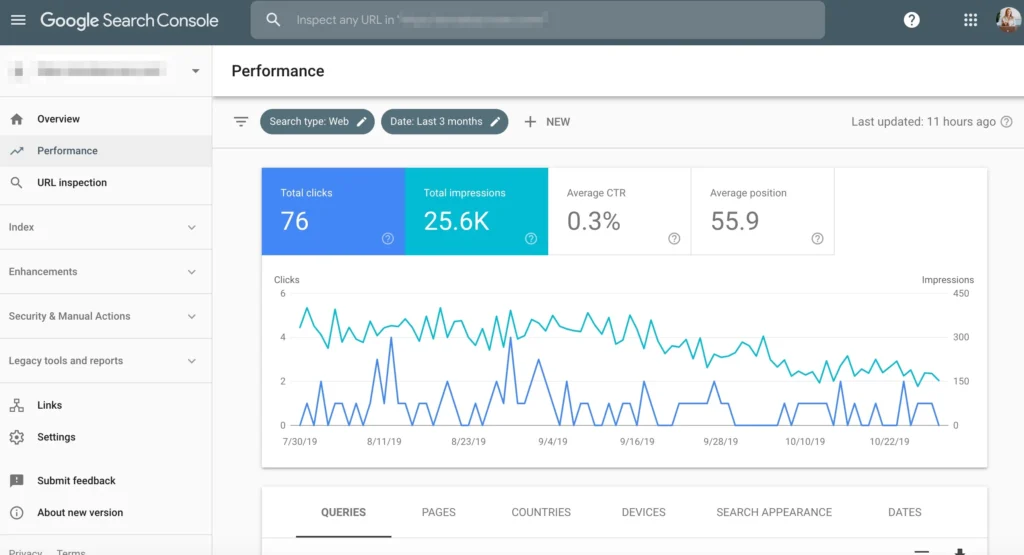
By monitoring your site’s impressions, clicks, and ranking positions, you can pinpoint areas where your SEO efforts could be enhanced. Google Search Console also enables you to submit your sitemap, helping to ensure that all your pages are properly indexed.
Additionally, Search Console alerts you to any security issues or malware infections that might be affecting your website.
Google Search Console is an essential tool for every website owner. Beyond tracking performance in search results, it allows you to submit your sitemap and robots.txt file, request indexing for new content, and much more.
Most importantly, it provides a way to verify ownership of your website. This verification is crucial if you need to make changes to your site or submit it to Google for inclusion in search results. Several verification methods are available, all detailed in the Search Console Help Centre.
The most common approach is adding a snippet of code to your website that matches the data in your Search Console account. Other options include uploading an HTML file, inserting an HTML tag into your site’s verification details page, or using a DNS record. Whichever method you choose, carefully follow the instructions to successfully verify ownership of your site.
Title Tags and Meta Descriptions to Boost Your Search Engine Visibility
Title tags are the short text snippets that appear in search engine results pages, while meta descriptions are the longer summaries displayed beneath those titles. Both are crucial in helping potential visitors decide whether to click through to your website.
Title tags should be clear and concise, featuring the primary keywords relevant to your page. Meta descriptions, on the other hand, should offer a more detailed summary of the page’s content and also include relevant keywords.
However, be cautious not to over-optimize your title tags and meta descriptions, as this can negatively impact your rankings. It’s important to find the right balance—use keywords thoughtfully and ensure both title tags and meta descriptions are informative, engaging, and inviting.
SEO Requires You to Optimise the Content on Your Website
One of the most crucial aspects of SEO—and also one of the easiest to manage—is your on-page text. By carefully crafting the content on your website, you can ensure it aligns with the keywords you’re targeting and boost your chances of ranking well in search results. Here are some tips to help you get started.
First, ensure your content is well-written and free of errors. This not only aids search engine crawlers but also enhances the overall experience for your site visitors.
Second, focus on creating unique, keyword-rich titles and descriptions for each page. This helps search engines understand the purpose of each page and guides visitors to the most relevant content.
Third, producing high-quality, EAT-friendly content is essential for any business aiming for online success. EAT stands for “Expertise, Authoritativeness, and Trustworthiness,” a key factor that search engines consider when ranking websites.
To demonstrate your site’s EAT, ensure all content is well-written and informative. Including citations from reputable sources to support your claims further strengthens your site’s authority.
Finally, regularly updating your website with fresh content signals to search engines that your business is active and engaged, helping you achieve even higher rankings
The Gentle Art of Internal and External Linking
When creating a brand-new website, one of the key goals is to encourage users to spend more time exploring your content. One effective way to achieve this is through linking. Linking keeps visitors engaged by guiding them to additional information and useful resources.
It also helps reduce bounce rates—the phenomenon where users visit a site but leave quickly without interacting further. By strategically creating links, you can direct users to the most relevant content and keep them engaged with your site longer. Moreover, linking provides valuable context to search engines about how your pages relate to one another.
This helps search engines understand the structure of your website, which can contribute to higher rankings in search results. Therefore, linking benefits both users and search engine bots.
External linking, or link building, occurs when your website links to another site. This differs from internal linking, where you link between pages within your own site. External linking is a popular SEO strategy because it can boost a website’s search engine rankings.
When done properly, link building can be advantageous for both parties involved. For the website receiving the link, external links serve as valuable backlinks that can improve its search ranking.
For the linking site, external links can enhance click-through rates and increase traffic. Additionally, external linking helps build relationships with other websites in your industry. When selecting sites to link to, it’s important to choose high-quality, relevant websites that complement your own.
Why You Should Submit Your Sitemap to Google for Indexing
One of the most important steps in optimising your website for Google is submitting your sitemap. If you’re unsure what a sitemap is, it’s essentially a file that lists all the pages on your website. Submitting this file to Google helps ensure that every page on your site is properly indexed.
There are several benefits to submitting a sitemap, including:
- Ensuring all pages get indexed: For larger websites, Google may only have indexed a fraction of your pages. Submitting a sitemap guarantees that all your pages are crawled and added to Google’s search index.
- Controlling crawl frequency: By specifying how often each page is updated, you can influence how frequently Google crawls your site. This is especially helpful for pages that update regularly, like blogs or news sections.
- Increasing visibility in search results: Properly indexing all pages improves the likelihood that users will discover your site when searching for relevant keywords.
You can create a sitemap manually or use tools like XML Sitemaps Generator to automate the process. After your sitemap is ready, there are two main ways to submit it to Google:
- Add it to your robots.txt file: This is the preferred method because it allows you to indicate how often Google should check your sitemap for updates. Simply add the following line to your robots.txt file, replacing “YOUR-SITEMAP-URL” with the actual URL of your sitemap:
Sitemap: YOUR-SITEMAP-URL - Submit via Google Search Console: Although less automated, this method is straightforward. Log in to your Google Search Console account, select your website, then navigate to “Crawl” > “Sitemaps” and add your sitemap URL. Google will then begin crawling and indexing your website’s pages.
Finally, Never Underestimate the Power of Backlinks
As mentioned earlier, backlinks are links from other websites pointing to your site, and they play a crucial role in boosting your SEO. Search engines use complex algorithms to assess the quality and authority of websites, which helps determine their ranking in search results.
Backlinks are one of the key factors these algorithms consider. Generally, websites that earn more high-quality backlinks tend to rank higher in search engine results. So, to enhance your SEO, it’s essential to focus on acquiring backlinks from reputable and authoritative websites.
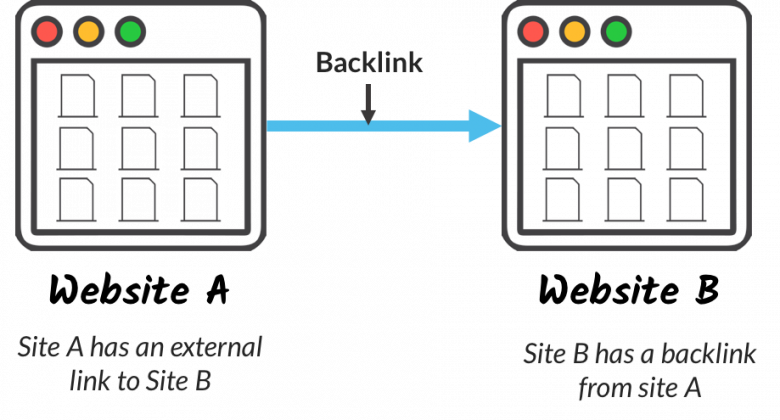
However, it’s important to remember that backlinks cannot be bought or generated through dishonest or artificial means. Engaging in such practices could lead to a drop in your search rankings. The most effective way to build backlinks is by creating high-quality content that others naturally want to reference. By producing informative and engaging articles, you encourage other website owners to link to your content, helping you build your authority and boost your online visibility.
Creating blog posts, videos, guides, and other valuable content types can organically attract the attention of your target audience. The key is to offer content that is useful, interesting, and informative. If your content is dull or irrelevant, people will quickly lose interest. Conversely, genuinely helpful and engaging content is more likely to be shared and linked to by others.
When it comes to SEO, remember that Rome wasn’t built in a day. No matter how well-designed or functional your site is, it will take time to rank well in Google search results. This is because Google needs to crawl and index your pages first, and then visitors need to discover your site organically.
In the meantime, keep refining your SEO strategy by staying informed about the industry and making steady improvements to your website. By investing time and doing things properly from the outset, you’ll set yourself up for increased traffic and higher conversions.
Looking to boost your search traffic? Let our SEO experts at DigiTotal help propel your website to the top of search results with our powerful SEO campaigns. Contact us today for a no-obligation quote.


